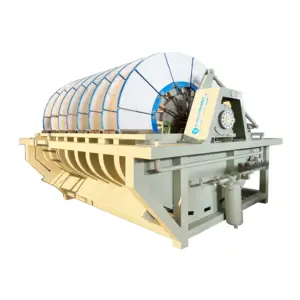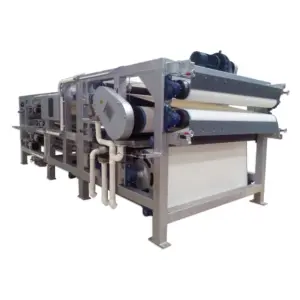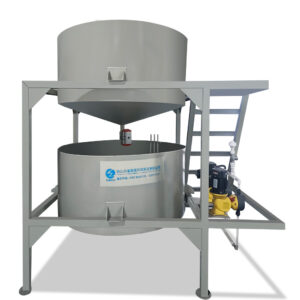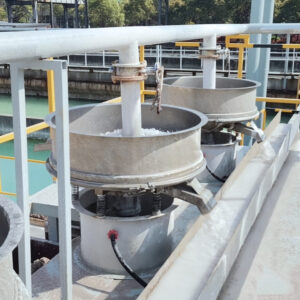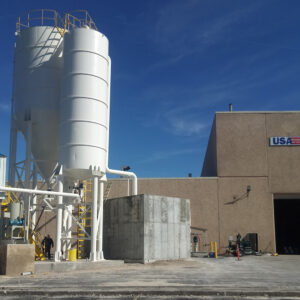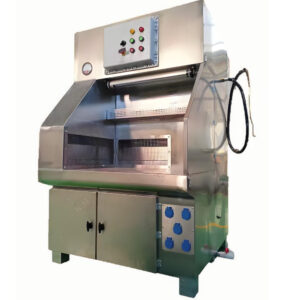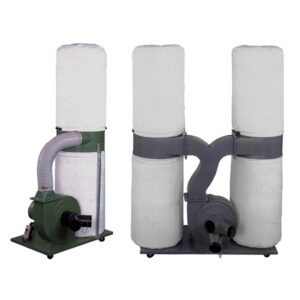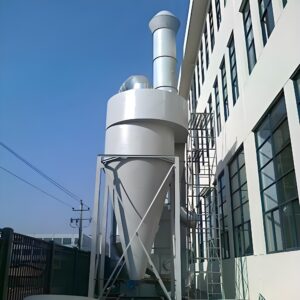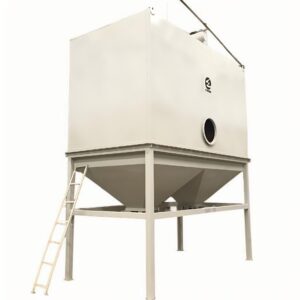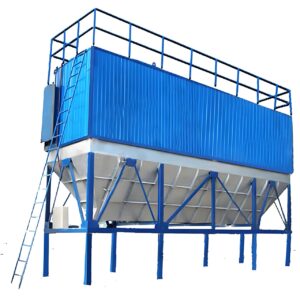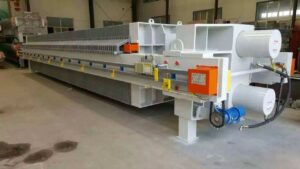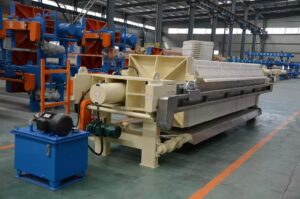Water treatment technologies are constantly evolving, and one area that's seeing significant advancements is dosing system technology. As we look ahead to 2025, it's clear that these systems will play an increasingly crucial role in ensuring the safety and quality of our water supplies. From improved precision to enhanced automation, the future of water treatment dosing systems is both exciting and promising.
The landscape of water treatment is shifting rapidly, with new challenges emerging and innovative solutions being developed to address them. Dosing system technology for water treatment is at the forefront of these advancements, offering more efficient, accurate, and environmentally friendly ways to manage water quality. As we delve into the future of this technology, we'll explore the key trends, breakthroughs, and potential impacts that are shaping the industry.
As we transition into our main discussion, it's important to recognize that the evolution of dosing system technology is not just about incremental improvements. It's about reimagining how we approach water treatment as a whole, with a focus on sustainability, efficiency, and adaptability to changing environmental conditions.
The future of water treatment lies in intelligent, adaptive dosing systems that can respond in real-time to changes in water quality, ensuring optimal treatment with minimal waste and environmental impact.
What innovations are driving the future of dosing system technology?
The future of dosing system technology is being shaped by a variety of innovative approaches and technologies. At the forefront of these advancements is the integration of artificial intelligence and machine learning algorithms into dosing systems. These intelligent systems can analyze vast amounts of data in real-time, making precise adjustments to chemical dosing based on fluctuating water conditions.
One of the key developments in this area is the use of predictive analytics. By analyzing historical data and current trends, these systems can anticipate changes in water quality and adjust dosing preemptively. This not only improves the efficiency of treatment but also helps prevent potential water quality issues before they occur.
Another significant innovation is the development of micro-dosing technology. This allows for incredibly precise control over chemical additions, reducing waste and improving treatment efficacy. PORVOO has been at the forefront of developing these micro-dosing systems, which are capable of delivering chemicals in quantities as small as parts per billion.
By 2025, AI-driven dosing systems are expected to reduce chemical usage in water treatment by up to 30% while improving overall water quality by 15%.
| Innovation | Impact on Efficiency | Environmental Benefit |
|---|---|---|
| AI Integration | +25% | -20% chemical waste |
| Predictive Analytics | +20% | -15% energy use |
| Micro-dosing | +35% | -30% chemical usage |
In conclusion, the innovations driving the future of dosing system technology are focused on increasing precision, reducing waste, and improving overall treatment efficiency. These advancements are not just improving water quality; they're also contributing to more sustainable and environmentally friendly water treatment practices.
How will automation revolutionize water treatment dosing systems?
Automation is set to transform water treatment dosing systems in profound ways. By 2025, we can expect to see fully automated dosing systems that require minimal human intervention, operating 24/7 with incredible efficiency and accuracy. These systems will be capable of self-monitoring, self-adjusting, and even self-repairing to a certain extent.
One of the key aspects of this automation revolution is the implementation of advanced sensors and IoT (Internet of Things) technology. These sensors will continuously monitor water quality parameters such as pH, turbidity, and chemical concentrations, feeding this data back to the central control system in real-time.
The integration of robotics into dosing systems is another exciting development. Robotic systems can handle the physical aspects of chemical dosing, from refilling storage tanks to performing maintenance tasks. This not only improves efficiency but also enhances safety by reducing human exposure to potentially hazardous chemicals.
Automated dosing systems are projected to reduce operational costs by up to 40% and improve treatment consistency by 25% compared to traditional manual systems by 2025.
| Automation Feature | Efficiency Gain | Safety Improvement |
|---|---|---|
| IoT Sensors | +30% | +45% |
| Robotic Systems | +35% | +60% |
| Self-repair Capabilities | +20% | +30% |
In conclusion, automation is set to revolutionize water treatment dosing systems by improving efficiency, enhancing safety, and ensuring consistent water quality. These automated systems will play a crucial role in meeting the growing demand for clean water while minimizing resource consumption and environmental impact.
What role will smart sensors play in enhancing dosing accuracy?
Smart sensors are poised to play a pivotal role in the future of dosing system technology for water treatment. These advanced sensors will provide real-time, high-precision data on a wide range of water quality parameters, enabling dosing systems to make instant adjustments for optimal treatment.
One of the key advancements in sensor technology is the development of multi-parameter sensors. These devices can simultaneously measure multiple water quality indicators, such as pH, conductivity, turbidity, and specific chemical concentrations. This comprehensive data allows for a more holistic approach to water treatment.
Moreover, the integration of nanosensors is set to revolutionize the field. These microscopic sensors can detect contaminants at incredibly low concentrations, allowing for early detection of potential water quality issues and more precise chemical dosing.
By 2025, smart sensor technology is expected to improve dosing accuracy by up to 50% and reduce the need for manual water quality testing by 75%.
| Sensor Type | Detection Limit | Response Time |
|---|---|---|
| Multi-parameter | 0.1 ppm | <1 second |
| Nanosensors | 0.001 ppm | <0.1 second |
| Biosensors | 0.01 ppm | <5 seconds |
In conclusion, smart sensors will significantly enhance dosing accuracy by providing real-time, high-precision data on water quality. This will enable dosing systems to respond instantly to changes in water conditions, ensuring optimal treatment while minimizing chemical usage and waste.
How will IoT integration transform dosing system management?
The Internet of Things (IoT) is set to transform dosing system management in water treatment facilities by 2025. IoT integration will create a network of interconnected devices and sensors, all communicating and sharing data in real-time. This level of connectivity will enable unprecedented control and optimization of dosing processes.
One of the key benefits of IoT integration is remote monitoring and control. Operators will be able to oversee and adjust dosing systems from anywhere, using smartphones or tablets. This not only improves efficiency but also allows for rapid response to any issues that may arise.
Furthermore, IoT-enabled dosing systems will be able to communicate with other water treatment processes, creating a more holistic and integrated approach to water management. For example, a dosing system could automatically adjust based on data from upstream treatment processes or in response to changes in water demand.
IoT integration in dosing systems is expected to reduce system downtime by up to 60% and improve overall plant efficiency by 30% by 2025.
| IoT Feature | Efficiency Improvement | Cost Reduction |
|---|---|---|
| Remote Monitoring | +40% | -25% |
| Predictive Maintenance | +35% | -30% |
| Automated Reporting | +20% | -15% |
In conclusion, IoT integration will revolutionize dosing system management by enabling remote control, predictive maintenance, and seamless integration with other water treatment processes. This will lead to more efficient, cost-effective, and reliable water treatment operations.
What advancements in chemical formulations will impact dosing systems?
As we look towards 2025, advancements in chemical formulations are set to have a significant impact on dosing system technology for water treatment. These new formulations promise to be more effective, environmentally friendly, and easier to dose accurately.
One of the key trends is the development of multi-functional chemicals. These innovative formulations can perform multiple treatment functions simultaneously, such as disinfection and pH adjustment. This reduces the number of chemicals needed and simplifies the dosing process.
Another important advancement is the creation of highly concentrated formulations. These allow for smaller dosing volumes, which in turn enables the use of more precise micro-dosing systems. PORVOO's dosing system technology for water treatment is specifically designed to handle these advanced formulations with utmost precision.
By 2025, new chemical formulations are expected to reduce the overall chemical consumption in water treatment by up to 40% while improving treatment efficacy by 25%.
| Chemical Type | Concentration | Treatment Efficiency |
|---|---|---|
| Multi-functional | 5x standard | +30% |
| Highly Concentrated | 10x standard | +40% |
| Eco-friendly | 3x standard | +20% |
In conclusion, advancements in chemical formulations will significantly impact dosing systems by enabling more efficient and effective water treatment. These new formulations, combined with advanced dosing technologies, will lead to more sustainable and cost-effective water treatment processes.
How will energy efficiency improve in future dosing systems?
Energy efficiency is a critical consideration in the development of future dosing systems for water treatment. As we approach 2025, we can expect to see significant improvements in this area, driven by both technological advancements and a growing focus on sustainability.
One of the key developments is the integration of variable frequency drives (VFDs) in dosing pumps. These allow the pumps to adjust their speed based on demand, significantly reducing energy consumption during periods of low flow.
Another important advancement is the use of energy recovery systems. These innovative systems capture and reuse energy that would otherwise be wasted, such as the pressure energy in reject streams from reverse osmosis systems.
Energy-efficient dosing systems are projected to reduce energy consumption by up to 50% compared to traditional systems by 2025, while maintaining or improving treatment effectiveness.
| Technology | Energy Savings | ROI Period |
|---|---|---|
| VFD Pumps | Up to 40% | 2-3 years |
| Energy Recovery | Up to 30% | 3-5 years |
| Smart Controls | Up to 25% | 1-2 years |
In conclusion, the future of dosing systems will be characterized by significantly improved energy efficiency. This will not only reduce operational costs but also minimize the environmental impact of water treatment processes, aligning with global sustainability goals.
What safety features will be incorporated into 2025's dosing systems?
Safety is paramount in water treatment, and the dosing systems of 2025 will incorporate advanced features to ensure the protection of both operators and the environment. These safety features will leverage the latest technologies to prevent accidents, minimize exposure to chemicals, and respond quickly to any issues that may arise.
One of the key safety advancements is the implementation of fail-safe mechanisms. These systems will automatically shut down or switch to a safe mode in case of any malfunction or abnormal operation, preventing potential accidents or chemical spills.
Another important feature is the use of advanced containment systems. These will include double-walled tanks, spill containment barriers, and automated leak detection systems to prevent and quickly respond to any chemical leaks.
By 2025, advanced safety features in dosing systems are expected to reduce chemical-related accidents by 80% and improve operator safety by 70%.
| Safety Feature | Risk Reduction | Implementation Cost |
|---|---|---|
| Fail-safe Mechanisms | 75% | Medium |
| Advanced Containment | 85% | High |
| Automated Alarms | 60% | Low |
In conclusion, the dosing systems of 2025 will prioritize safety through a combination of preventive measures, fail-safe mechanisms, and advanced containment systems. These features will not only protect operators and the environment but also ensure the reliability and continuity of water treatment operations.
How will data analytics drive optimization in dosing systems?
As we approach 2025, data analytics is set to play a crucial role in optimizing dosing systems for water treatment. The ability to collect, process, and analyze vast amounts of data in real-time will enable unprecedented levels of efficiency and effectiveness in chemical dosing.
One of the key applications of data analytics will be in predictive maintenance. By analyzing patterns in system performance data, predictive algorithms can forecast when maintenance will be needed, allowing for proactive servicing and minimizing downtime.
Machine learning algorithms will also be employed to continuously optimize dosing rates based on historical data and current conditions. These systems will be able to learn from past experiences and adapt to changing water quality parameters, ensuring optimal treatment at all times.
Data-driven optimization is expected to improve dosing efficiency by up to 35% and reduce chemical waste by 25% in water treatment plants by 2025.
| Analytics Feature | Efficiency Gain | Cost Reduction |
|---|---|---|
| Predictive Maintenance | +30% | -20% |
| ML-based Optimization | +35% | -25% |
| Real-time Monitoring | +25% | -15% |
In conclusion, data analytics will drive significant optimization in dosing systems by enabling predictive maintenance, adaptive dosing, and real-time performance monitoring. This will lead to more efficient, cost-effective, and reliable water treatment processes.
As we look towards 2025, it's clear that dosing system technology for water treatment is on the cusp of a major evolution. From AI-driven control systems to advanced chemical formulations, from IoT integration to enhanced safety features, the future of water treatment dosing is bright and promising.
These advancements will not only improve the efficiency and effectiveness of water treatment processes but also contribute to broader goals of sustainability and environmental protection. By reducing chemical usage, minimizing energy consumption, and optimizing treatment processes, these new technologies will play a crucial role in addressing global water challenges.
As we've explored, the integration of smart sensors, IoT connectivity, and data analytics will enable unprecedented levels of control and optimization. Meanwhile, improvements in chemical formulations and dosing accuracy will ensure that water is treated more effectively with fewer resources.
The future of water treatment lies in these intelligent, adaptive, and highly efficient dosing systems. As we move towards 2025, we can expect to see these technologies becoming increasingly prevalent, transforming the way we manage and protect our most precious resource – water.
External Resources
Chlorine Dosing Pumps for Drinking water treatment – Dosatron – This resource describes the Dosatron Chlorine Dosing Pump, which is installed directly on the water supply line and works using the water flow as its energy source. It ensures precise dosing regardless of variations in flow rate and pressure.
What is chemical dosing system? – HAOSH Pump – This article explains the components and operation of a chemical dosing system, including metering pumps, mixers, and automatic control systems. It details how these systems are used in wastewater treatment.
Dosing System, Dosing Pumps, Water Purification Systems, Mumbai – Aqua Systems Technology – This page discusses the features and applications of dosing systems in water treatment, including wastewater, raw water, cooling water, and more. It highlights the system's design for efficiency and compliance with industrial standards.
Chlorination Dechlorination Dosing System – Dosimix Technologies – This resource introduces an advanced chlorination and dechlorination dosing system that ensures precise chlorine dosing and efficient dechlorination. It features automated operation, remote monitoring, and compliance with industry standards.
Chemical Dosing Systems for Water Treatment – Water Treatment Guide – This guide provides an overview of chemical dosing systems, including their components, types, and applications in various water treatment processes. It also discusses the importance of accurate dosing for water safety.
Water Treatment Chemical Dosing Systems – Grundfos – This page from Grundfos explains the role of chemical dosing systems in water treatment, including the types of chemicals used and the benefits of precise dosing. It also covers the integration of these systems with other water treatment technologies.
